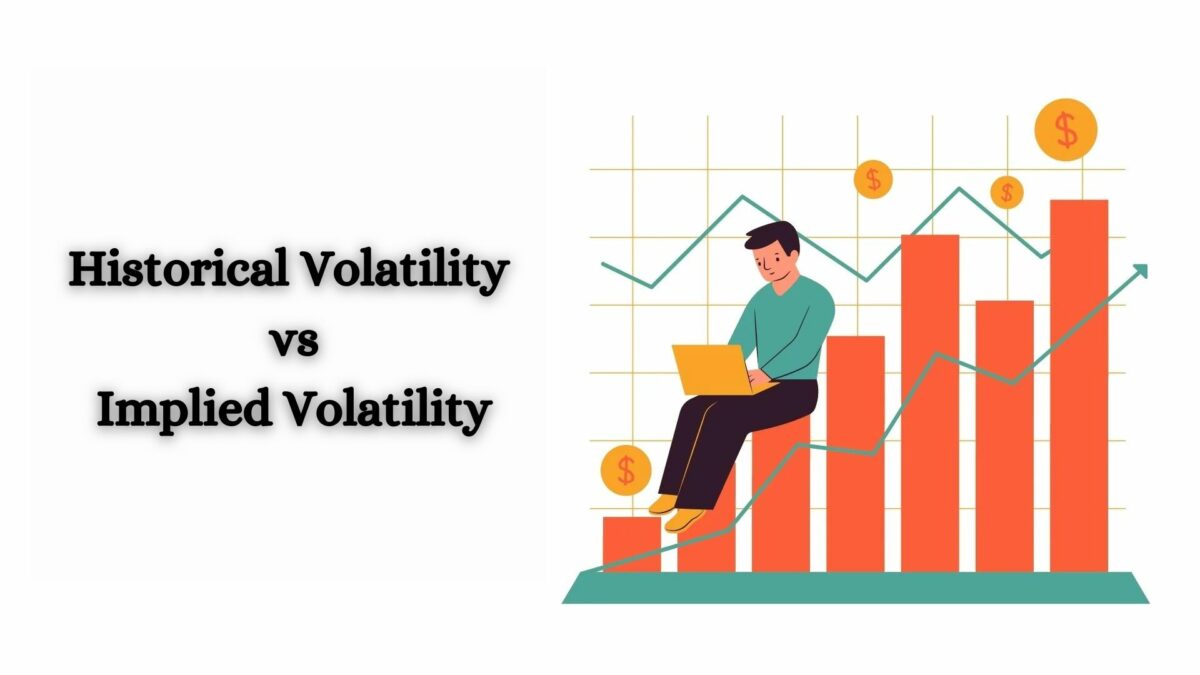In this article we will discuss about Historical volatility vs Implied volatility. Of all the drivers of an option contract’s price, perhaps none is as important as volatility. For most people thoughts of volatility are accompanied by visions of roller-coasters and see-saws, rapid rises interrupted by disturbing descents. And such imagery isn’t far off. The type of volatility that these pictures reference is that of historical volatility or HV for short.
Sometimes referred to as statistical volatility, historical volatility measures how much a stock has actually moved in the past. Because it reflects how much volatility the stock has realized over a set time frame it is also referred to as realized volatility. Pardon the plethora of synonyms, but you’ll quickly find the powers that be on Wall Street have created multiple ways of saying the same thing.
As you would imagine stocks with erratic behavior – the wicked roller coasters of Wall Street – display an elevated HV. Think of names like Tesla Motors (TSLA) or Twitter Inc. (TWTR). The blue bird, for example, currently boasts a 21-day HV of 66%. Standing in contrast to these unstable securities are companies like Wal-Mart (WMT) and Coca-Cola (KO) which often follow the activity pattern of a corpse. The 21-day HV of WMT sits at a low of 10% right now.
Take note of the price charts of both TWTR and WMT below with historical volatility studies included in the lower panel.
Implied volatility, or IV for short, is the second popular measurement of volatility you’ll hear bouncing around the trading halls. While HV measures how volatile a stock has been in the past, Implied volatility reflects how volatile a stock is expected to be in the future. Implied volatility is embedded in the premium of option contracts. It’s essentially the component of option prices that is driven by supply and demand. As demand for an option increases, so too does its price, and as the price of an option increases, so too does the implied volatility.
In other words, expensive options require the stock to be a lot more volatile to justify the current price being paid. Alternatively, cheap options don’t require the stock to be that volatile to justify the current price being paid. In summary, high implied volatility goes along with expensive options and low implied volatility goes along with cheap options.
Many option traders use these measures of volatility to determine if it is better to buy or sell option contracts. In the event they discover option prices are elevated they would look to sell them in some fashion. When they recognize that option prices are depressed they would avoid selling them or perhaps even start buying them.
The world of volatility analysis is a bit complex, but like all paths of learning it begins with learning the lingo. With today’s musings now consumed you should have a better handle on the basics of historical and implied volatility.
Author Profile

- Jonas Taylor is a financial expert and experienced writer with a focus on finance news, accounting software, and related topics. He has a talent for explaining complex financial concepts in an accessible way and has published high-quality content in various publications. He is dedicated to delivering valuable information to readers, staying up-to-date with financial news and trends, and sharing his expertise with others.
Latest entries
 BlogJuly 8, 2024Introduction to Tax Liens and Deeds
BlogJuly 8, 2024Introduction to Tax Liens and Deeds BlogOctober 30, 2023Exposing the Money Myth: Financing Real Estate Deals
BlogOctober 30, 2023Exposing the Money Myth: Financing Real Estate Deals BlogOctober 30, 2023Real Estate Success: Motivation
BlogOctober 30, 2023Real Estate Success: Motivation BlogOctober 28, 2023The Santa Claus Rally
BlogOctober 28, 2023The Santa Claus Rally

